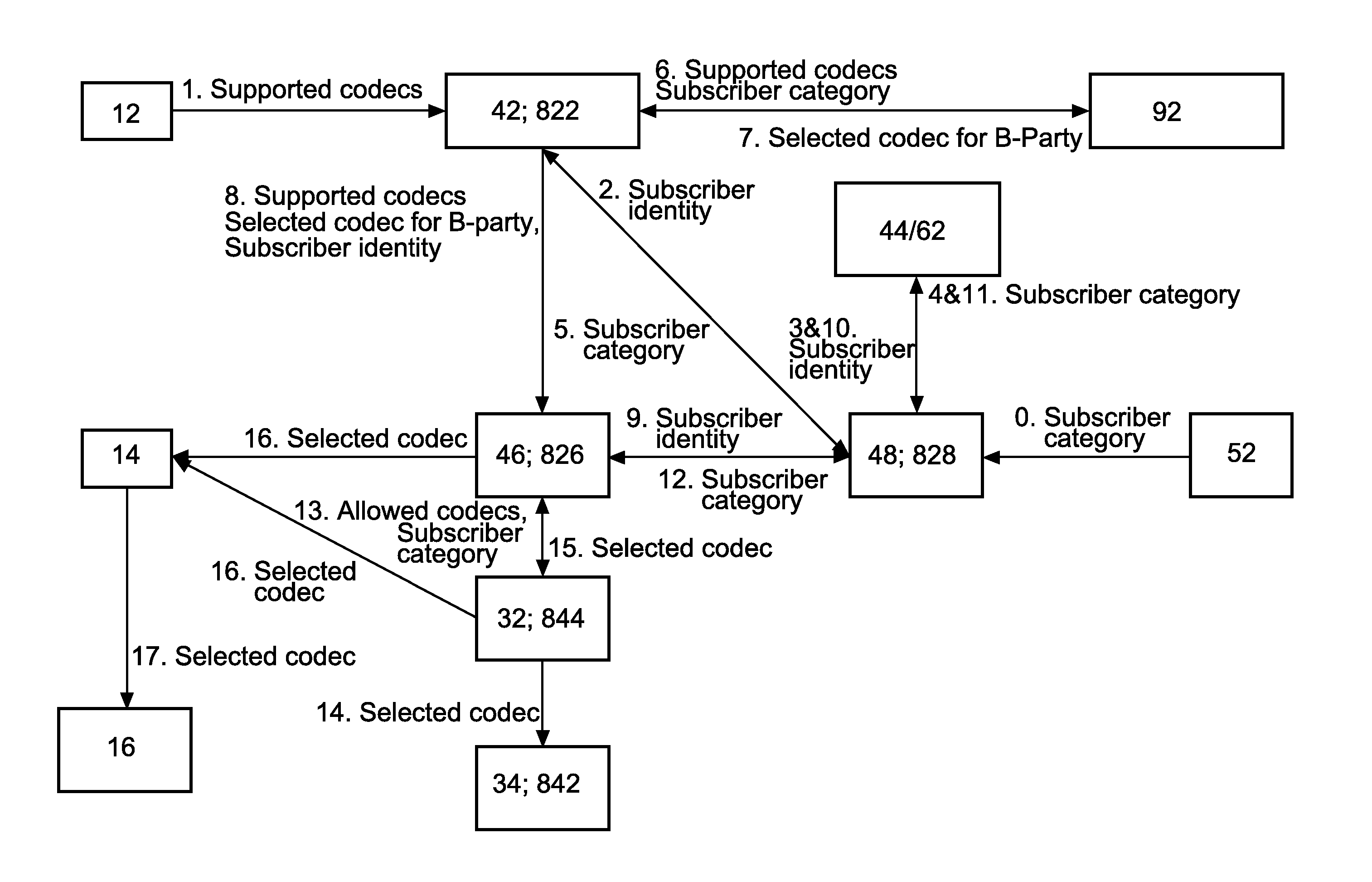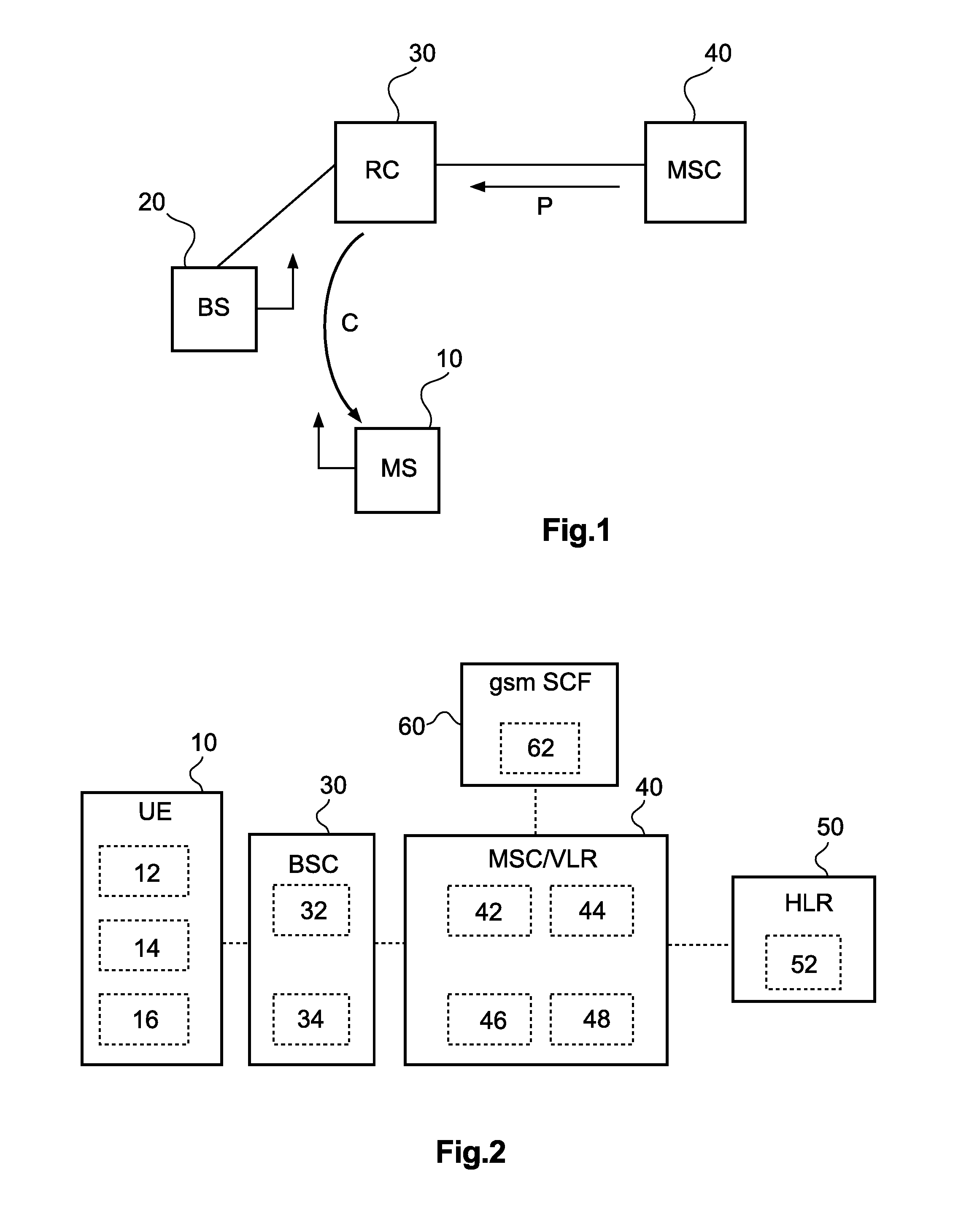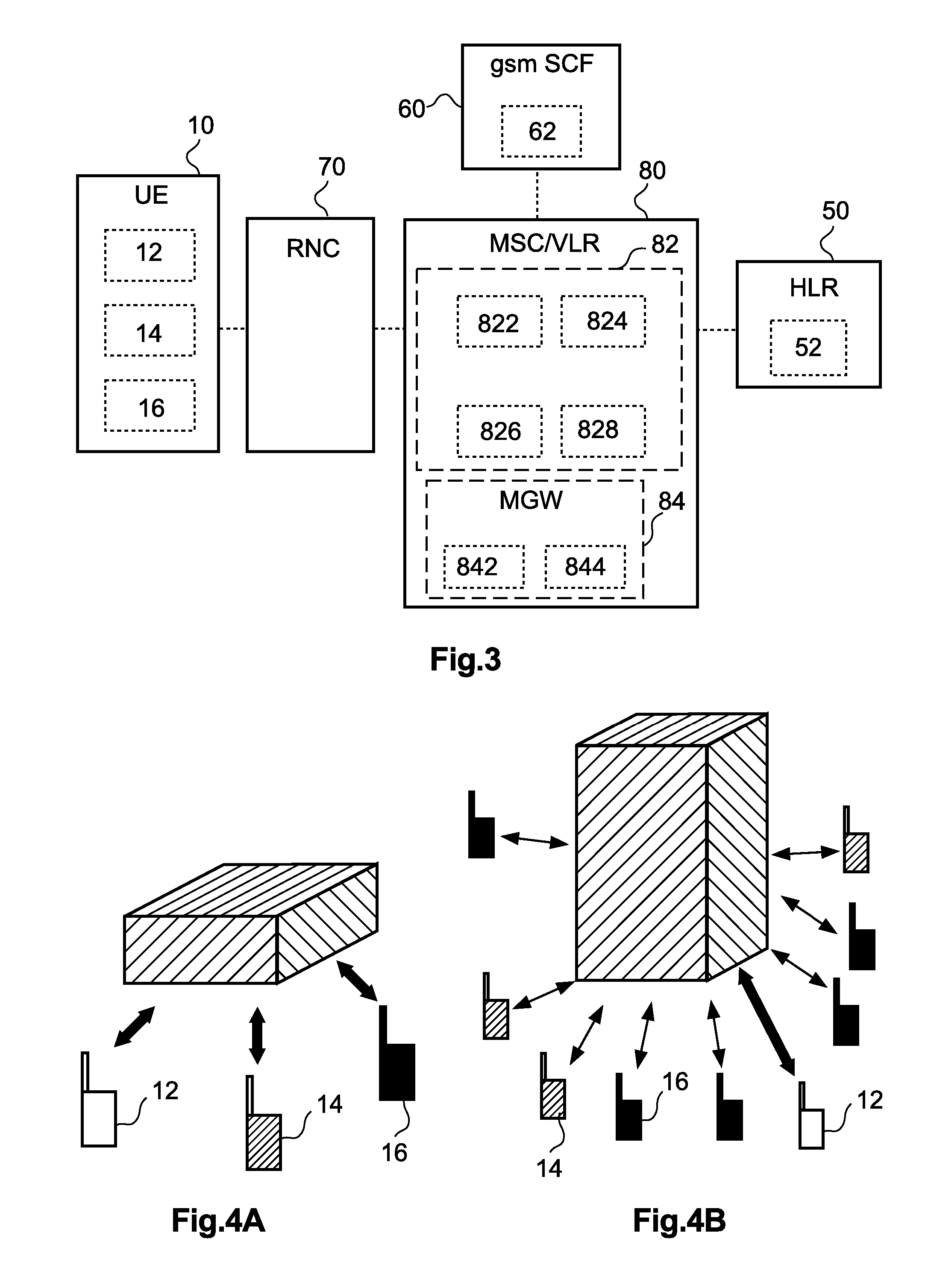Priority-Based Resource Allocation
- Summary
- Abstract
- Description
- Claims
- Application Information
AI Technical Summary
Benefits of technology
Problems solved by technology
Method used
Image
Examples
first embodiment
[0058]FIG. 2 shows a schematic block diagram of a GSM network architecture according to the
[0059] An MSC / VLR 40 may be one integrated network element or two separate network elements (MSC Server and Media Gateway) as specified in 3GPP Release 4. In the REL-4 GSM architecture, a Codec Selector for performing a Network Codec Selection function 32 and Transcoder Unit 34 are logically located in a base station controller (BSC) 30, even if the physical location of the Transcoder Unit 34 may be in the Media Gateway (not shown in FIG. 2).
[0060] In GSM, a subscriber category parameter sent by an Allowed Codecs Selection function 46 of the MSC / VLR 40 to the Network Codec Selection function 32 may be a priority parameter (for example as defined in 3GPP TS 48.008, chapter 3.2.2.18). It may have values from “1” (highest priority) to “14” (lowest priority). Alternatively it could be some not yet standardized new parameter representing subscriber category, or a proprietary parameter.
[0061] Furt...
second embodiment
[0068]FIG. 3 shows a schematic block diagram of a UMTS network architecture according to the
[0069] It is noted that also the UMTS MSC / VLR 80 of FIG. 3 may be one integrated network element or two separate network elements, i.e., MSC Server 82 and Media Gateway (MGW) 84 as specified in 3GPP Release 4 and indicated in FIG. 3.
[0070] In the present UMTS-based second embodiment, the subscriber category parameter may represent a user's subscriber category, e.g. it may have values which represent Gold / Silver / Bronze, or Premium / Mass-market, or any other operator defined subscriber segmentation scheme. This parameter is an internal parameter to the MSC / VLR 80. In case of 3GPP REL-4 architecture, this parameter may be external to the MSC Server 82 and some proprietary parameter could be used to represent it.
[0071] Furthermore, in UMTS, it is an Allowed Codecs Selection function 826 of the MSC Server 82 which indicates the selected codec to the UE Codec Selection function 14 at the UE 10. Th...
PUM
 Login to View More
Login to View More Abstract
Description
Claims
Application Information
 Login to View More
Login to View More - R&D
- Intellectual Property
- Life Sciences
- Materials
- Tech Scout
- Unparalleled Data Quality
- Higher Quality Content
- 60% Fewer Hallucinations
Browse by: Latest US Patents, China's latest patents, Technical Efficacy Thesaurus, Application Domain, Technology Topic, Popular Technical Reports.
© 2025 PatSnap. All rights reserved.Legal|Privacy policy|Modern Slavery Act Transparency Statement|Sitemap|About US| Contact US: help@patsnap.com



